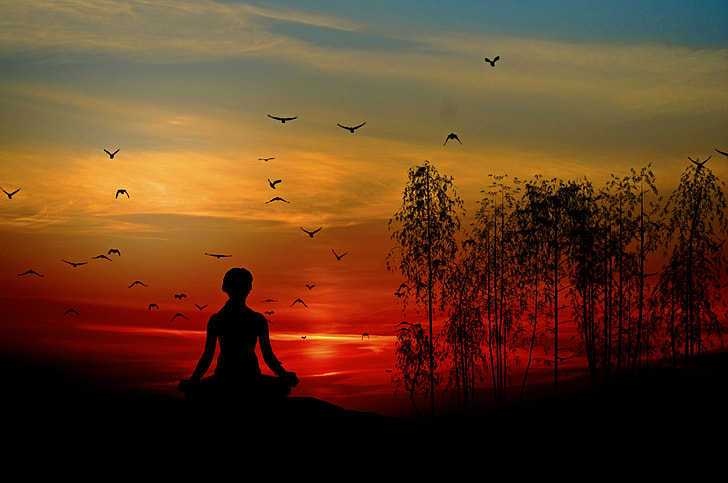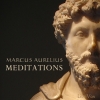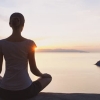
Meditation is a natural part of Buddhist life. And it is gaining more and more practitioners even if their practice is not linked to Buddhism. What is interesting about Buddhist methodology is that there are many ways of practicing and many reasons to do so, which we will explore.
You can meditate anywhere, anytime
There is an important misconception about what meditation is. It is such a strong understanding that a lot of people refuse to do it believing it is impossible. Other people may practice it without not even knowing they are actually meditating.
Meditating happens all the time, but we are mostly not aware enough or we are not present enough to make the most of this practice. We don’t need to sit in the lotus position to meditate. We don’t need to “not think of anything” to meditate. We don’t need to pose our hands in the right mudra. We just need to be in a meditative state of mind.
It is possible to meditate while sitting in a chair, while washing the dishes, or while walking from the parking lot to your office. Meditation is what happens when you reconnect with yourself. It is what happens when you become present for yourself, when you listen to and care for yourself.
Bring it back to breath
Have you ever eaten a sandwich and didn’t even realise you were eating? You were not there at that moment. You were not present. Meditation is about being aware of yourself for yourself. Let me show you what I mean. Stop now and pay attention to your breathing. Breathe in and out three times. Don´t change it , don’t force it, just notice how it happens and feels, notice it as if you had to describe it to someone.
For a couple of seconds, you were aware of something in your body. You noticed the air coming in through your nostrils, and maybe even noticed if it felt warm or cool. You must have noticed that the air seems to go out faster than it comes in. You may even noticed that there was a little pause between a complete breath and another.
Walk when walking and contemplate when contemplating
Breathing is the most basic key used to open the door to self-awareness and meditation, breathing. But, you can also pay attention to your steps, as you lock your car in the parking lot, the movements of your feet and legs, your knees. Further, you can focus on how the ground feels beneath you, how your toes feel inside your shoes as you step forward. How your body shifts your weight from one leg to the other.
At lunch time, go to a park. Pick a tree and sit somewhere you can look at it without being disturbed. Notice its roots that might be coming out of the earth, the shapes of its branches, how the breeze blows the leaves as if caressing them. However, if you are too hungry you won’t enjoy it, but if you can wait a bit, your food will taste different and you will feel calmer to enjoy your lunch.
Being in the present stops the mind wandering
I have just described 3 of the many forms of meditation taught by Buddhism: breathing, walking and contemplating something.
For some Buddhist schools, there are certain conventions to engage in meditation. That’s the case with Zen, which requires zazen (sitting meditation) to be real meditation. And that works really well for those keen on hard discipline or those who can make or make time for it.
I have kids, a house to run, my job, and only sometimes can I have the time for that type of meditation, so mostly I make the most of the opportunities in front of me. I love practicing contemplative meditation when I am watching my daughter sleep. Don’t be fooled, it is still a tough exercise, and requires a lot of discipline to stop my mind wandering.
I sit there and naturally I ask myself what her life will be like, if I should enroll her in French classes, if she will ever get married. But that’s the whole point of contemplative meditation. I have to push away those thoughts and for as long as I decide to remain there, I force myself to limit my thoughts into appreciating her closed eyelids, her smell, how her little torso goes up and down as she breathes. Her littles fingers naturally flexed, her palms up. There. It calms me and fills my heart with gratitude.
Mediating is a highly active practice
According to Buddhism, there is no “nothing”. It simply doesn´t exist, so don’t imagine meditating is like a black screen on the computer of your mind. According to Buddhism it is emptying your mind with regrets (past) or worries (future) and fully engaging with the present happening right there, right now.
It all starts slowly. One day it will be 5 minutes and the other may be 5 minutes too, but after a while, you may get to 40 minutes and you won’t even notice. Buddhist monks can lose track of time really easily when meditating.
Silencing the thoughts in our minds is challenging, but not impossible. You can chant mantras, which are a few inspirational words or prayers repeated over and over again. Learn it. Focus on your mantra and sit quietly repeating it. Your mind will be focusing on repeating the right words and that will free you from your thoughts, at least for a while.
There are also guided meditations. Lots of Buddhist temples offer it. Normally they don’t even charge. You just need to show up in time, sit and follow the instructions. The Guide will tell you what to focus on, how to breathe, what to think, and when they say “now, when you feel ready, open your eyes” you won´t believe you just did it.
Not only how, but why
For Buddhists, a more important question than how to meditate is why. We must first remember that Buddha reached enlightenment through meditation. And secondly, it is one of the steps of the eightfold path, developing the right concentration.
Meditation is an act of reconnection with yourself and therefore with the cosmos. It is through meditation that we silence the world and rid ourselves of delusions and see “the matrix” for what it really is.
Being part of something greater, acknowledging that you are but a small piece of a huge engine. The engine cannot work without you, but you are not the only reason it works.
So, meditate. Try to find the best way for you. Something that works and that you can allow. But most of all, do it not because it is fashionable. Do it because you want more. You want answers that are kept inside of you. And because out there, in the daily grind, it is too loud for any of us to hear our inner voice. So find the time and place to listen.










